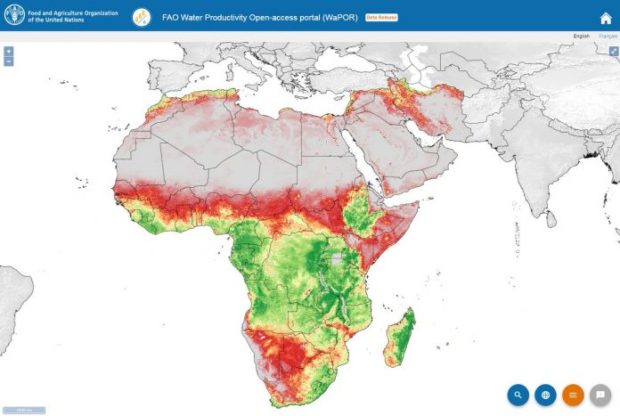Water Productivity
Labor productivity and capital productivity are well-known development indicators. Water productivity is less well known but situations where water is the limiting factor it becomes relevant to maximize production and value per unit of water. Water productivity can be expressed on plant level, farm level, irrigation scheme, watershed or country. It can be expressed in dry matter per unit of water (kg/lt)or as a monetary value per unit of water (USD/lt).
It takes one liter of water to produce one kilo-calorie of food. This means that each person consumes 3- 4000 liters of water, just while eating. For that reason it is crucial to invest in water productivity for food security: the food-water nexus.
Country water productivity is measured and ranked. The water productivity divides the GDP by the total volume of abstracted water. One widely consulted water productivity index is hosted by the Word Bank Water productivity Rwanda . According data base Rwanda produces 51/usd per m3 of water. This number is not saying much since water abstraction is very low and partly unmeasured.
However, in general Rwanda has a huge potential to increase the land-and water productivity. This potential can be unlocked by better land and water management.

It is possible to produce more with less – with the correct application of scientific expertise and technology. Some of the options available include:
- Optimalization of fertilization
- Modernizing irrigation systems
- Modifying cropping patterns
- Supplemental (targeted) irrigation
- Macro- and micro water catchment management
- Deficit irrigation
Supplemental irrigation allows farmers to plant and manage crops at the optimal time increase water productivity. Supplemental irrigation allows farmers to plant their crops early, increasing yields.
Water harvesting is an effective, low-cost technology to conserve every last drop of available moisture. In the drylands, traditional knowledge of underground cisterns, flood harvesting systems, and basins for collecting water and channeling it for household use and horticulture. By building on these technologies, the resilience and adaptability of rural communities can be further strengthened.
Future perspectives of water productivity measurement for Rwanda:
For the moment the FAO remote sensing for water productivity use pixels of 250 and 100 meter. This means that each point of information covers a minimum of 1 ha. The information level is useful for large scale farming or forestry with uniform land use patterns but it is not suited for the small scale diverse agriculture in Rwanda. In Rwanda the water productivity value represent a combination of land uses present in that area of 1 ha. 1 ha of a small holder might have sorghum, bananas, coffee plants and a homestead. So the measured water productivity value cannot be attributed to one specific land use. However, these (aggregated) water productivity values could be used to monitor the overall water productivity at catchment and sub-catchment level. Higher resolution maps (30 m and less) for a more detailed water productivity monitoring are for sale on the market.
FURTHER READING:
Article on Water efficiency and water productivity
Article on remote sensing and water productivity
Article on tool to assess water consumption, water productivity and water availability
Masterclass about water productivity on the waterchannel
water productivity introduction
Water productivity ranking World Bank: Water productivity Rwanda
Yieldgap water productivity
FAO WaPOR portal:
